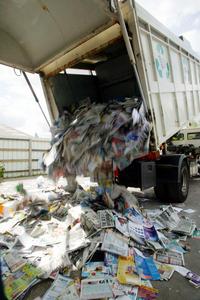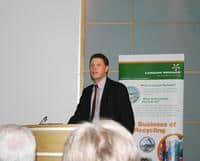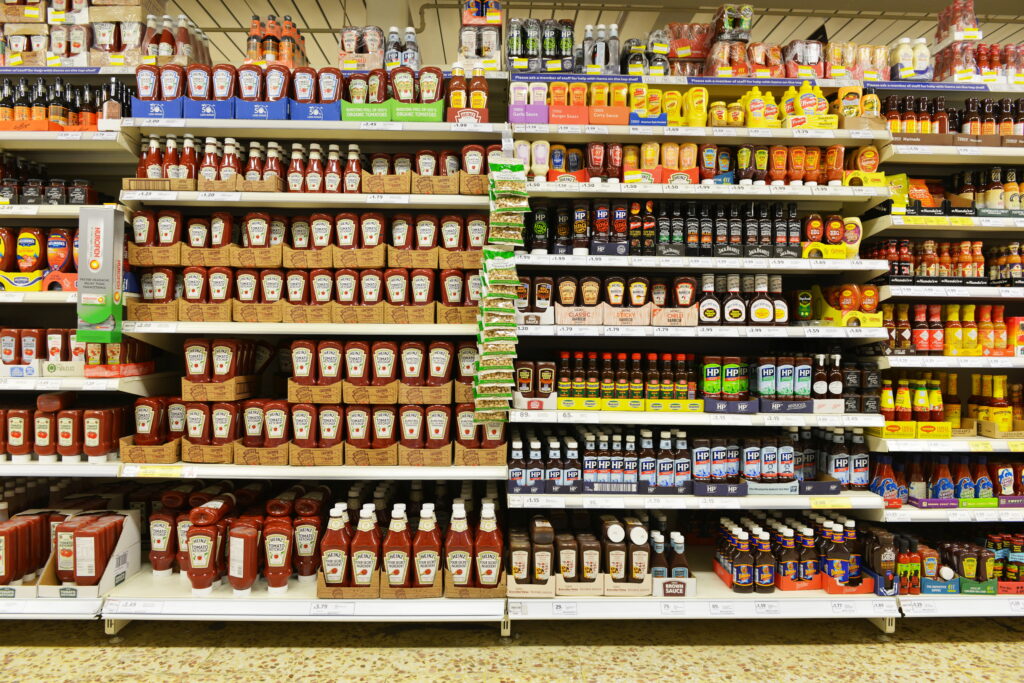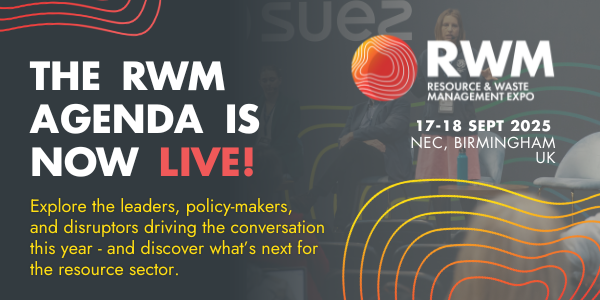The meeting came as the EA took action over some export material that it alleged were container loads of mixed paper which were contaminated.
Currently recovered paper merchants in the UK know what mills will accept and follow guidelines such as “Recovered Paper Quality Control Guidelines” (CEPI and ERPA, 2004) and EN 643, European List of Standard Grades of Recovered Paper and Board for recovered paper purchasing. WRAP helped to produce the EN 643 but the standard hasn't any major impact on the sector. However neither of these specify an accepted contamination rate for export material which is what the meeting at the DTI set out to do.
The meeting and follow-up sessions finished inconclusively as the paper industry (who generally deal with source segregated material) generally wanted to set a contamination rate of 1% or less, but the waste industry and some local authorities wanted a less stringent contamination rate to make it feasible for their MRFs to continue exporting paper.

Over the past year, many of the key players from the meeting have split off to develop a range of new standards and good practice guidelines – all due to come out this year. So what are these new standards and how will they help to sustain the paper market?
PAS105
WRAP (Waste & Resources Action Programme) has been working with a range of stakeholders and reprocessors to develop a best practice standard for domestic paper recovery called the PAS105 recovered paper sourcing and quality for UK end markets. The standard is for waste management companies, paper mills, reprocessors and local authorities. It will be officially published by the BSI (British Standards Institution).
After many months of debate over the PAS there was a meeting this month with representatives from local authorities and the paper industry to agree the final amendments. The document is now with the BSI for them to produce the final document and the standard should be out later this year.
Liz Goodwin, director of construction and manufacturing at WRAP describes the aims of the standard: “It was initiated after local authorities expressed concern about the lack of clarity about what grade paper they should be collecting and what standards they need to meet. The comments at the meetings show that this is exactly what our document does.”
As more and more local authorities opt for comingled collections, WRAP recognised that a standard was needed to regulate incoming loads for both councils and reprocessors. Ms Goodwin revealed that an acceptable contamination level will be set in the PAS105 – which will be different for different types of paper collected (for example mixed paper/news and pamphlets). However she was unable to reveal at this point how high the rate of contamination would be.
The issue of paper quality was originally raised at the WRAP Paper Round table – where local authority and reprocessors meet every three months. The Round Table has been meeting since the mid 1990s, is chaired by WRAP and aims to develop a better understanding between paper reprocessors and local authorities.
The Round Table is facilitated by PaperChain which is a campaign sponsored by the papermaking sector members of the Confederation of Paper Industries (CPI) that rely on recovered paper as their primary raw materials.
Although everyone working on the PAS agreed that a standard was needed, it has taken many months to settle on the terms. Karen Bomford, environment manager at Basildon district council was involved in the early consultations over the PAS105 and explains where the problems lay. She says: “Paper mills want standards for paper to be as high as possible however local authorities want to collect paper in the cheapest way possible and these two aims can be contradictory.”
For local authorities, collecting in co-mingled containers is both easier for the public and cheaper for the council however Ms Bomford says that Basildon council still wants to ensure the paper the collected is as pure as it can be. “It is all about educating the public so if they are putting drink containers and cans in the same container as paper they must ensure the other materials are clean and dry.”
CEPI
However not everyone sees comingled collections as the way forward. CEPI (Confederation of European Paper Industries) stated in its Responsible Sourcing Guidelines: “The collection of paper along with other dry recyclables i.e. comingled collections is strongly discouraged and should be phased out as soon as possible.” It is this difference of opinion between local authorities and paper merchants about the nature of paper collection which has prevented the PAS from being released sooner.
Ron Humphreys, Abitibi-Consolidated Recycling Europe's managing director, champions source-segregation and questions WRAP's motives for creating the standard. He says: “WRAP has a problem because if exported paper from MRFs is being rejected it will have to go to landfill and this will mean the company will be in danger of challenging landfill diversion targets they set themselves.
Paul Dumpleton director of materials management, Shanks Group plc has some concerns about the document. He says: “The PAS is intended to give local authorities a degree of comfort but it doesn't actually do anything because it is not prescriptive enough and it is not a legally binding document.”
ESA – Recycling Registration Scheme
In addition to the WRAP standard, Environmental Services Association is also developing a quality assurance scheme called the Recycling Registration Scheme to ensure consistent quality standards and improve the transparency and traceability in management of material sent overseas for recycling and reprocessing. The scheme aims to improve confidence of local authorities and regulators in how the material is managed.

The Recycling Registration Scheme supports existing market specifications and supports rather than cutting across export markets
Mike Walker, director of policy, ESA
A pilot phase has started and the full scheme is expected to be fully operational by the end of the year. The scheme will be open to all facilities to apply to register, materials originating from a registered facility will be clearly identifiable.
UK recycling has tripled since 1997 of which paper is a major part. There is a huge demand for paper overseas and as our recycling targets go up we are becoming increasingly reliant on those markets. Indeed some analysts say the UK provides a good bread basket of recovered paper for the rest of the world notably Europe, India and China.
Mike Walker, director of policy, said: “Our scheme will ensure materials sent for recycling recycled are of high quality and will be processed in regulated facilities. In addition, the scheme's flexibility supports existing market specifications and supports rather than cutting across export markets.”
There are two parts to the scheme – ensuring the process in the UK is quality assured and also tracing material once it has left the factory to ensure it will be going to an environmentally responsible recycler.
CPI
CPI (Confederation of Paper Industries) represent the majority of the recovered paper industry and has also developed a code of practice called the Export Code of Practice which is due to be released in the next four weeks. The Code of Practice has been developed by CPI and IWPPA. The CPI annual review 2005 explains: “The Code concentrates on the key requirements of managing and controlling the output
The guidance stemmed from the need to give assurance to regulators about material leaving the UK.
Peter Seggie, CPI on the Export Code of Practice
quality of recovered paper and it's designed to give regulators the confidence that the material shipped to overseas reprocessors meets the requirements of the Waste Shipment Regulations.”
Peter Seggie, CPI's Recovered Paper Sector Manager describes why the Code of Practice is different to the ESA and WRAP standards: “The guidance stemmed from the need to give assurance to regulators about material leaving UK – a standard that's for shipment regulations. The problem with the EN643 is that it provides no defined output levels.
With all these new standards being created in the UK there is major component that is being overlooked – the end market for paper – Indonesia, Taiwan and the key player; China.
The Chinese are beginning to crack down on imported goods, indeed this September saw a new electronic system for pre-shipment inspection introduced. So will all these codes of practice actually be rendered useless if China rejects the waste at the other end? Indeed if Paperchain's predictions for the future that over time the Chinese market will begin rejecting material from MRFs then this may well be true. What the future holds for the paper industry is despite all this clarification, becoming increasingly unclear.









Subscribe for free